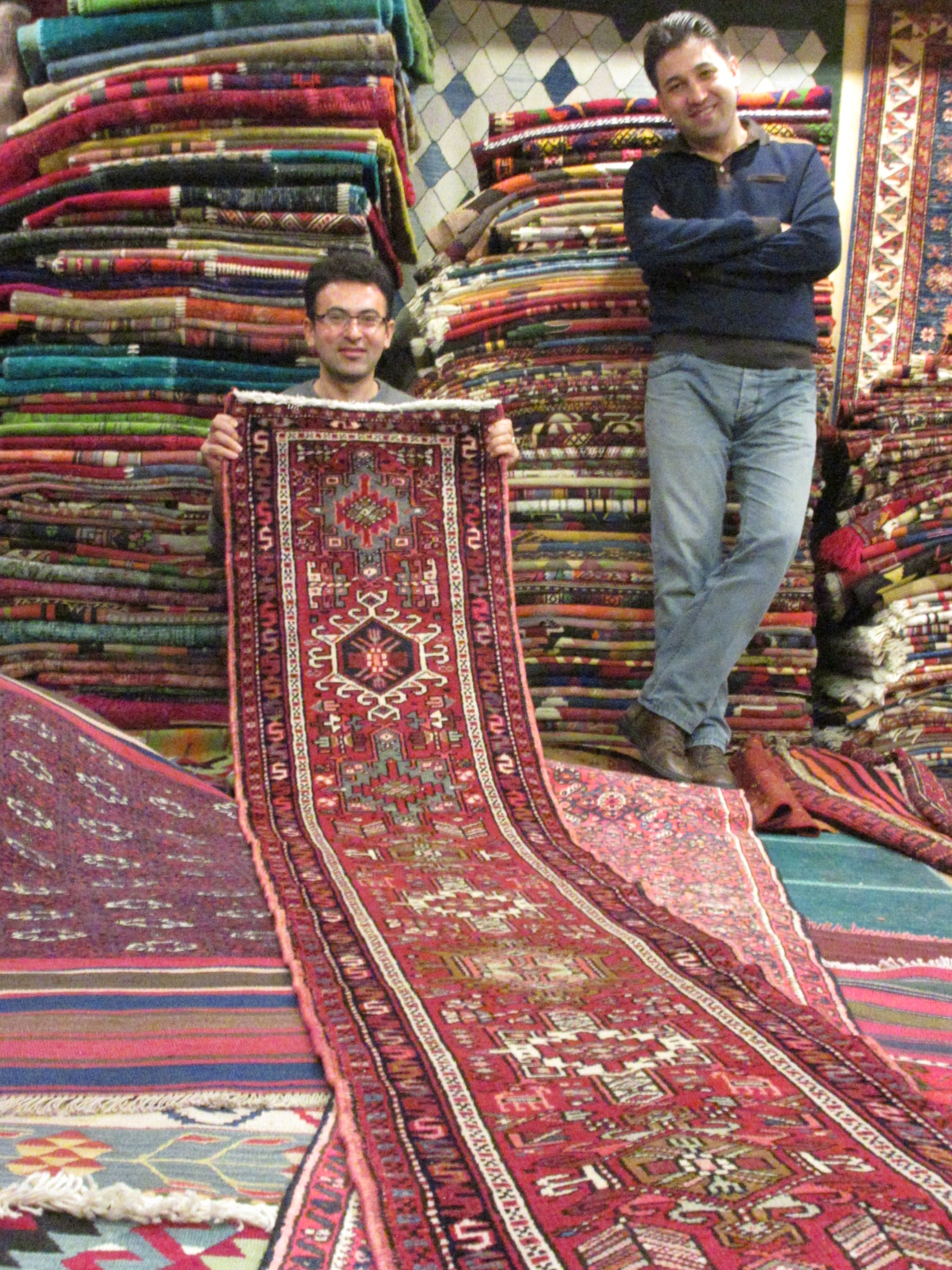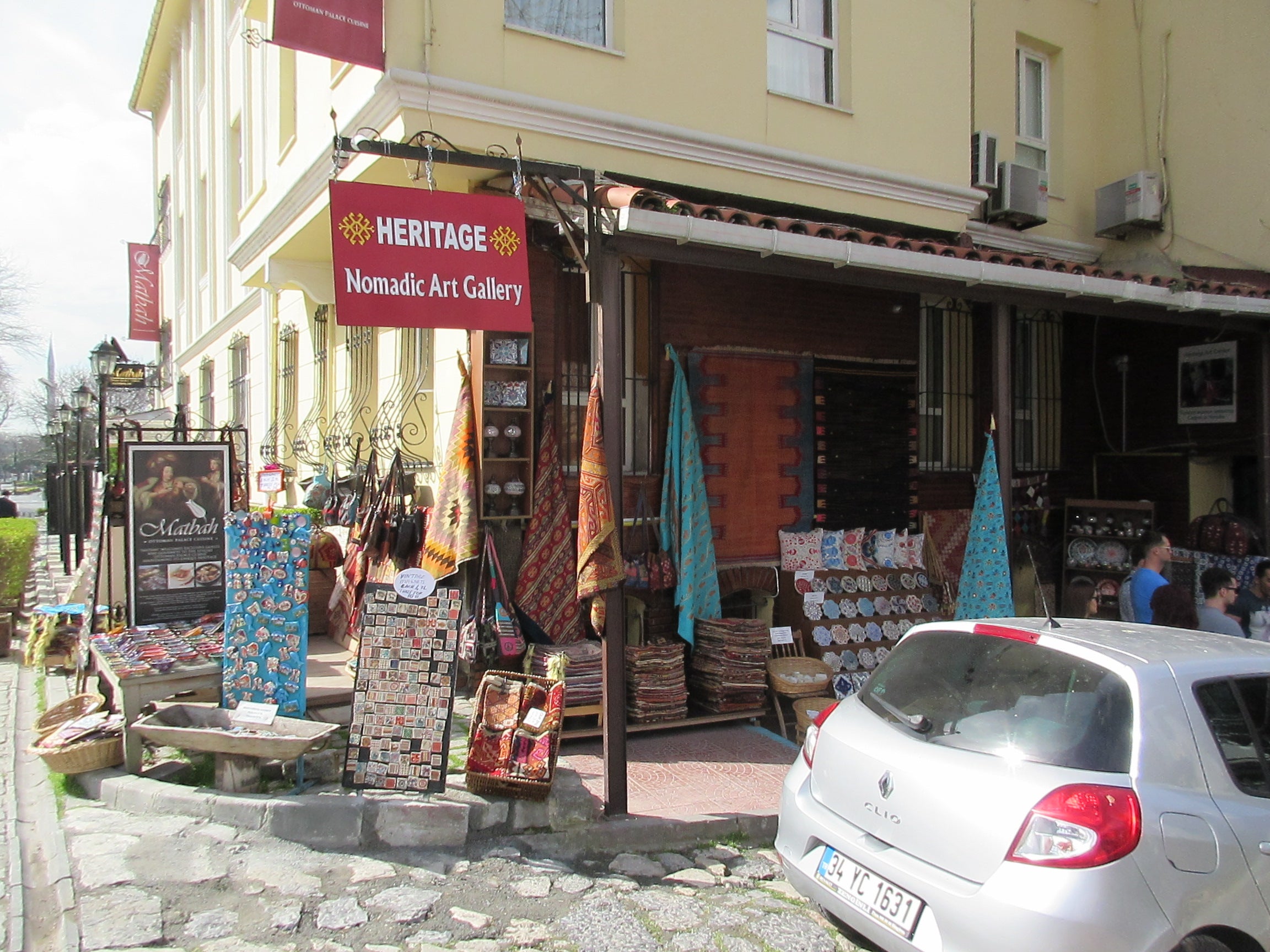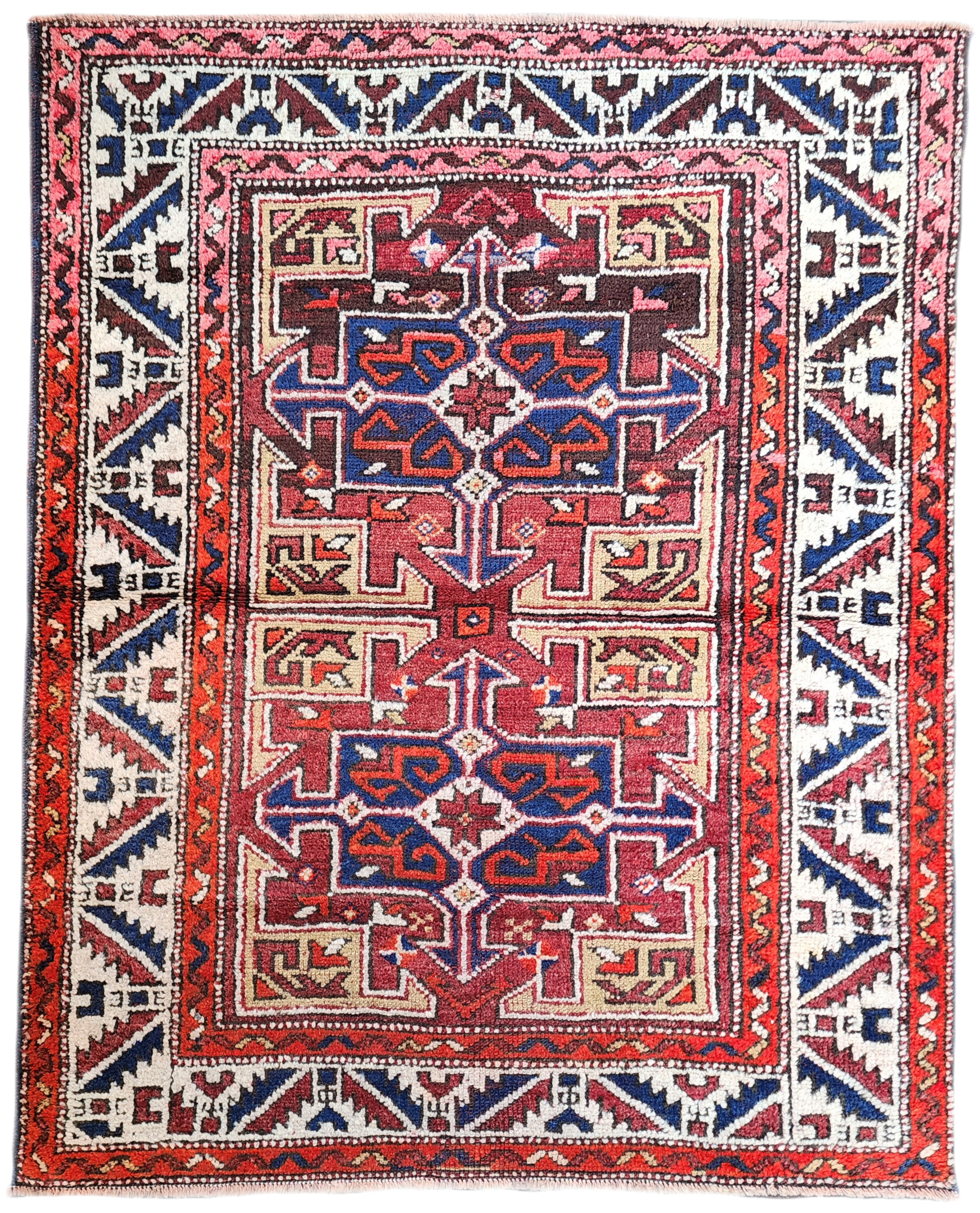
ESTABLISHNG THE AGE AND ORGIN OF ORIENTAL RUGS
Determining the age and origin of a rug is not an “exact science” or anything that can be learned overnight. Even the experts sometimes often find it difficult to make exact judgements about a rug’s age. However, over time, if one handles enough rugs, there are some key factors which help place a rug in time and place of origin.
To give an age to a rug, many variables need to be considered including 1) the Reverse Side, 2) the feel or “Handle”, 3) Pile / Wool Color and signs of wear over time, 4) Design and Weaving Technique, 5) KPSI Count.
1) REVERSE SIDE: Most people attempting to “age” a rug begin with the back of the piece. As a rug ages with use, the top surface will mellow in color and soften to the touch, but the reverse will usually maintain some of the original, stronger colors. Also, as the reverse side is in contact with the floor, it will become quite smooth. Newer rugs have no variation in color between top and bottom and may also show evidence of wool fibers and “fuzziness”, whilst older rugs usually do not.
2) HANDLE: The “handle” (floppiness) of a rug when folded back onto itself is also another indication of age. Newer rugs are quite stiff whilst aged rugs are supple and pliable.
3) PILE AND COLOUR: Color is also a good indicator of age. Pre 19th Century rugs were produced almost exclusively using natural, vegetable dyes and colors, whilst perhaps displaying natural “abrash”, did not “fade” on the surface. When the pile on a rug is examined, if the colors are stronger closer to the knotting, then this is a sign of synthetically dyed wool ageing over time. Rugs displaying such uniform fading are usually dated as being produced around or after the late 19th Century when synthetic dyes began to be produced and more commonly used. There is also a present-day trend to artificially fade rugs, but this process changes the whole colour and is easily identified when closely examining the pile as there is no variation in color. These “Vintage Style” rugs are, usually, more contemporary, mid 20th textiles artificially aged to appear older than they actually are.
4) DESIGN AND WEAVING TECHNIQUE: Another important factor in placing a rug in origin and time is the motif design and weaving technique. Many design patterns are unique to certain regions and specific production periods as rug weaving styles and techniques evolved over time due to consumer demand and material availability. Most important rug designs have been well documented and there are many available resources which help identify a rug’s age and origin according to the patterns, colors and knotting techniques used in its’ construction. Of course, many of these patterns and designs have been commercially reproduced in recent years, so it is important to understand how to differentiate between old and new rugs using all other criteria, such as pile color, handle and wear.
5) KNOT COUNT KPSI: One other characteristic of a rug which, along will many other considerations, may assist is placing it in origin and time is the Knot Count. The number of knots tied per square inch (KPSI) was often unique to a certain region or time period. Generally, most modern, more contemporary rugs will have a higher KPSI count than Antique rugs from the 18th and 19th Centuries, but there are always exceptions. For example, fine silk rugs will usually have a very high KPSI, regardless of age and the introduction of cotton as a warp thread when producing “City” carpets also saw many older rugs being woven with high KPSI counts.
It is important to note that there is no one key identifier of the origin and age of a rug. Consideration of a range of the key identifiers as well as any documented / anecdotal provenance are all crucial elements when trying “age” a rug and, even then, it may be possible to only stipulate a date range rather than a specific time of production.



Leave a comment
This site is protected by reCAPTCHA and the Google Privacy Policy and Terms of Service apply.